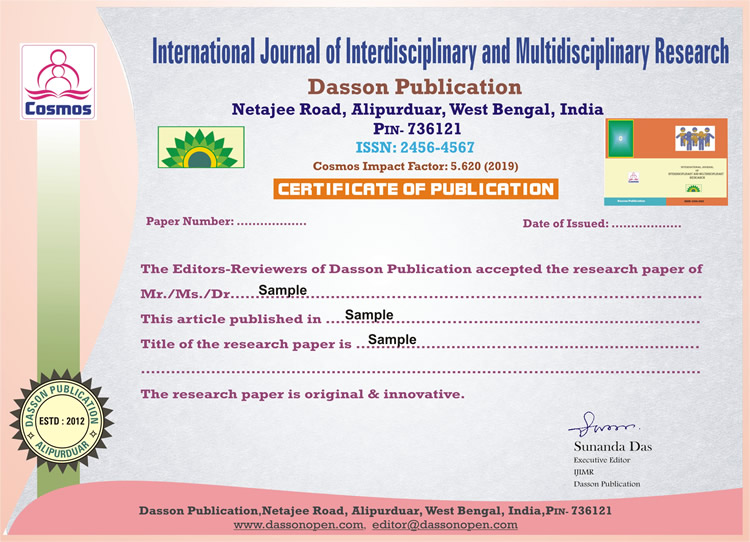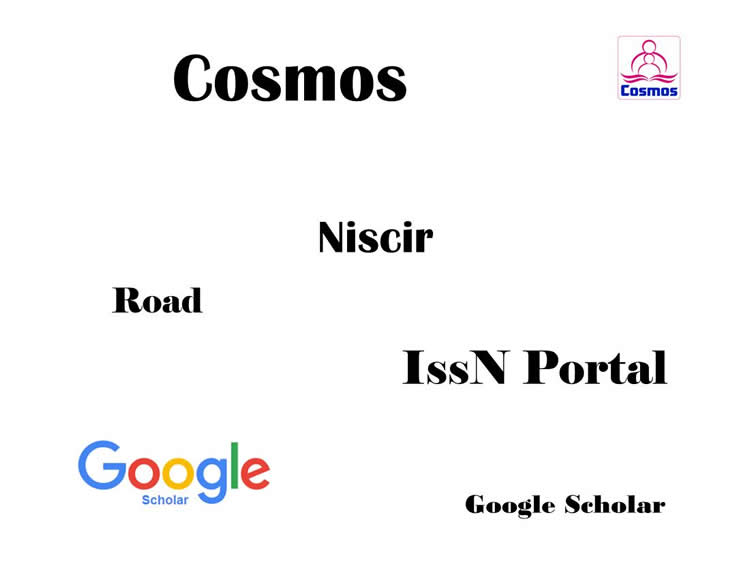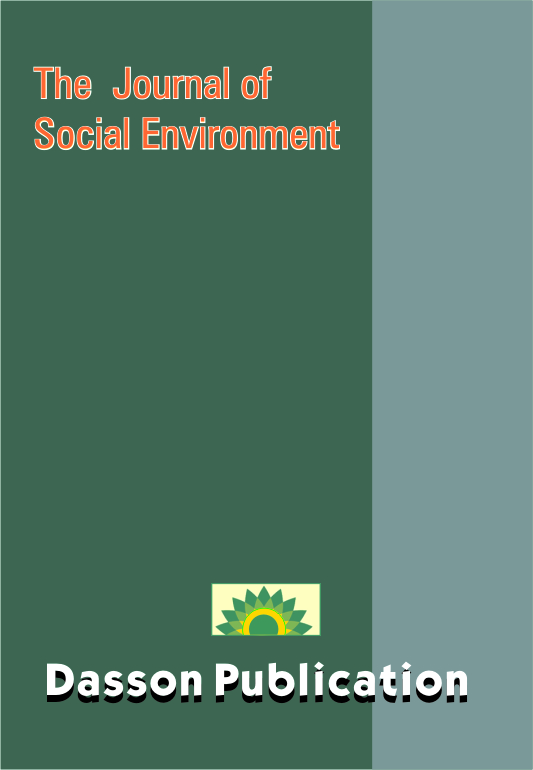
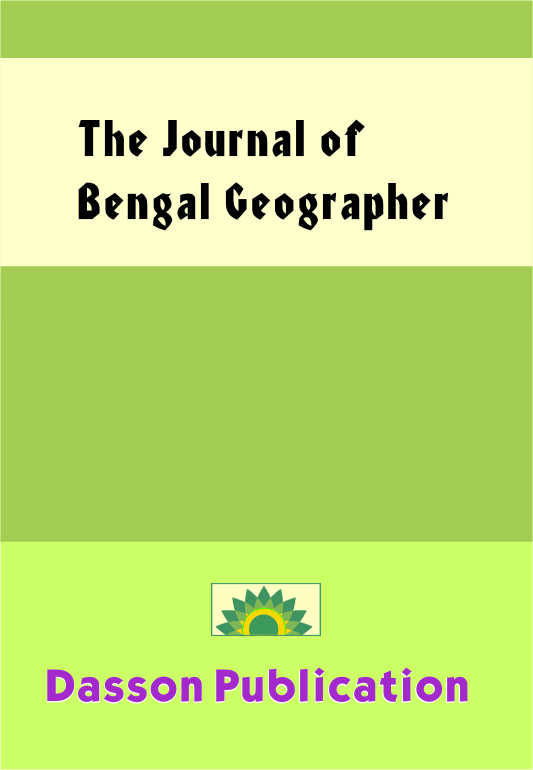
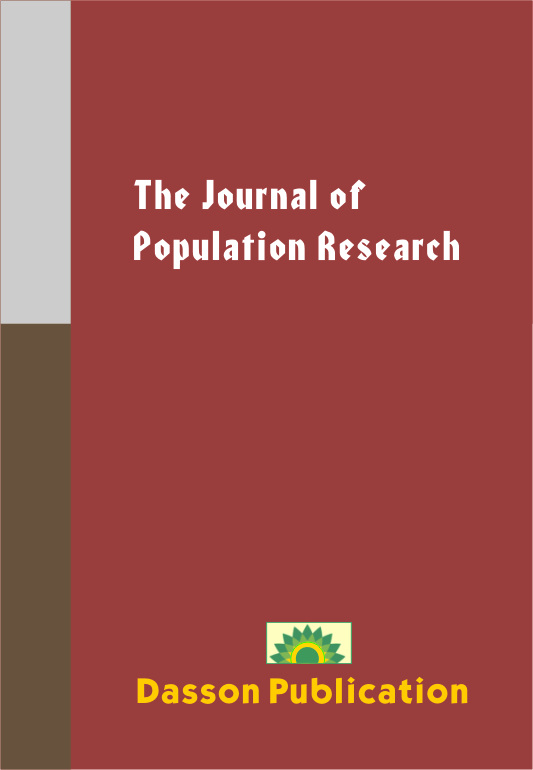
The journal aspires to achieve to the world of researcher to explore their talents and leasing them expose their acumen to exhibit their research pursuit. It would stress on creativity and innovation as the speciality, to forge ahead with the new ideas in the emerging new world. Today we traversed across countries, across cultures and made the world borderless, collapsing the barriers between countries. In the click of a mouse we have the potential to access the platforms, from one pole to the other; this gospel idea encourages us to publish a journal. The online version shall allow the researchers to easily relate to each other idea around the world. Welcome to all viewers to be a part of our journey and make the journal enrich forever.
Contact Email for Publication: editor@dassonpublication.com
Journals of Dasson Publication are peer reviewed and refereed Indexed online journal published in english. The journals have worldwide recognition and fast publication. We provide an intellectual platform for researcher and scholars to set free their unexploited potential. The journal shall assist supervision from prominent and widely read intellects across the globe. Our journals help in providing a favourable, reliable as well as cost effective solution of processing and delivering the publication to the door step of our readers. We believe in the veracity of people with an apparent organizational process. The journals provide for academic, scholars to publish current and significant research as well as publication activities.
Ethiopian Constitutional Experience under Emperor Hailesellassie: Comparative Analysis of 1931 Constitution and 1955 Revised Constitution
Negasa Gelana Debisa
Prior to 1931, Ethiopia depended on traditional customary laws of Fetha Negest, Kibre Negest, and Serate Mengist. The 1931constitution unlocked new episode in the Ethiopian political and legal regimes. This article comparatively analyses emphasis, content
Prior to 1931, Ethiopia depended on traditional customary laws of Fetha Negest, Kibre Negest, and Serate Mengist. The 1931constitution unlocked new episode in the Ethiopian political and legal regimes. This article comparatively analyses emphasis, contents, and motivation of the 1931 constitution and the 1955-revised constitution. The analysis shows the 1931 had endorsed and entrenched major laws from former customary laws. The 1995-revised constitution had included democratic concepts like human rights than the former; however, these values remained paper tiger. The emperor desired to establish his legitimacy under the auspices of these constitutions. This implies that the 1955-revised constitution was a trick to dismantle the already started question of legitimacy of the emperor as it was manifested in the 1960s and 1970s revolutions.
Comparative Study on Creep Rate Property of Cow Horn Filler in Selected Thermoplastic Polymer Composites
Ofor, Helen Obianuju
Chemistry Department Federal university lokoja, Kogi State Nigeria
This research is to develop environmentally friendly, lightweight composites using cow horn as filler in some thermoplastic polymer matrices High Density Polyethylene (HDPE), Polystyrene (PS), Polypropylene (PP) and Acrylonitrile-Butadiene-Styrene (ABS); to determine the creep rate properties of the cow horn-residue polymer composite, to find if there is any new improvement over the properties of the starting thermoplastic. Cow horn was collected from the surroundings of Ekwulumili in Nnewi-South L.G.A of Anambra State, Eastern Nigeria where they have been dumped after usage. The research was carried-out at JUNENG NIG LIMITED Enugu, Civil Engineering Department Laboratory University of Nigeria and Chemical Engineering Department Laboratory Ahmadu Bello University (ABU), Nigeria; between May 2016 and August 2018.The agro-wastes were grand into power and incorporated into the virgin thermoplastic polymers as filler at varied levels of 3%, 6%, 9%, 12% and 15%. The virgin HDPE thermoplastic polymers were used as the Control in the study. The mechanical properties of the composites produced were determined using American standard for Testing and Materials (ASTM), Standard Testing Methods.The production of coconut shell thermoplastic composite at different percentage fillers reinforcement showed bean overall higher creep rate than Control especially in HDPE, PP and ABS. Creep rate of was obtained by loading HDPE with 3% of coconut shell filler, 6% had Creep rate of , 9% had creep rate of , 12% had creep rate of and 15% had creep rate of respectively. Pure HDPE has creep rate of . PS loaded with 3% of coconut shell filler has creep rate of , 6% had creep rate of , 9% had creep rate of , 12% had creep rate of and 15% had creep rate of while the pure PS polymer has creep rate of . At 3% of coconut shell filler, the creep rate was , 6% had creep rate of , 9% had creep rate of , 12% had creep rate of and 15% had creep rate of as the pure PP polymer had creep rate of respectively. Pure ABS polymer has creep rate of , while 3% had creep rate of , 6% had creep rate of , 9% had creep rate of , 12% had creep rate of , 15% had creep rate of respectively. The Creep rate of polymer matrices loaded with coconut shell with exception of PS matrix composites at different percentages have stable and good behaviour of material after being subjected to high levels of stress. There was a significant improvement in creep mechanical property when different percentages of agro-wastes were incorporated in HDPE, PP, and ABS polymer matrices than the virgin polymers. The study has provided combinations of matrix/natural fillers that promote formation of new classes of composites and products with lower cost, light weight, good behaviour, high specific strength,eco-friendly nature and availability which also has potential application in the automobile and building construction industry.
Environmental and public health laws and regulations by institutions of Ethiopia: a critical appraisal on effectiveness of their implementation
Demamu Tagele Haligamo
Department of Environmental Health Hawassa University, Ethiopia
In Ethiopia there are a number laws, regulations and proclamations that are formulated and ratified on protecting the health of peoples and the environment. They have a number of standards, responsibilities and obligations, and punishments/penalties for non-compliance. Most of them are applied in Ethiopia by different institution to promote health and well-being of humans and the environment, but their effect is not satisfactory. To reduce the negative impacts of different projects different measures were taken by the government of Ethiopia in relation to environmental health and protection. However, studies shows, lack of manpower for enforcement, poor knowledge and skill of implementing bodies, political focus on economic priorities, lack of implementing laws, poor managerial supports, weak political commitment, lack of supervision from higher bodies, lack of coordination between sectors, scarcity of data for monitoring and corruption are the core problems that affects implementation of the laws at institutional/sectorial level.
The Role of Working Donkeys in Urban and Rural Areas of Assosa District, Benishangul Gumuze Region, Ethiopia
Nega Mekonnen1*, Demissie Channe
1,2Department of Animal Science, Assosa University, P.O.Box 18, Assosa, Ethiopia
The study was undertaken during January 2015 up to January 2016 at urban (Assosa town) and rural (Keshmndokebele) of Assosa district in Benishangul Gumuze regional state of west Ethiopia. The aim of the study was to explore the role of keeping working Donkeysin the study area. A cross-sectional systematic random survey of 200 households (100 from urban and the rest 100 from rural area of Assosa district) was undertaken by using semi-structured and pre tested questionnaire. Information on the role, of working donkeys in rural and urban areas of Assosa district was generated by using semi-structured and pre-tested questionnaire. Primary data were processed and analyzed by using SPSS version 20.0 software. Descriptive statistics were used to analyze the data quantitatively. Data gathered through key informant interview, focus group discussion and personal observation were analyzed qualitatively to strengthen data obtained from household survey. Methods of triangulation were used to measure the validity of the data. Donkeys in the study area were kept mainly for the purpose of transportation (pack and drought). “Draught” animals were equids used for the transport of goods and people by cart. “Pack” animals were equids used for the transport of goods by pack. In urban area all donkeys were engaged in drought type of work whereas 90% of working donkeys in rural areas were involved in pack type of work. Donkeys transport was also used in agricultural production, mainly to transport manure to the fields and the harvest from the fields to the homestead and from home stead to the market. Farmers with donkeys were able to use more fertilizer, because it could be transported easily from the market Place to the homestead and from the homestead to the fields. working donkeys were also acting on cart away of house hold wastes, fetching water, shifting household material (when there is a change in residence), carrying the sick animal or people to hospital like ambulance, transporting shopping, carrying fuel wood to homestead and market, pulling fencing materials, transporting People, transporting house building materials, transporting grain to the mills and back to home, transporting home consumables and construction materials Therefore area based development interventions could help to avoid management problems of working donkeys and to improve the role that donkeys play in promoting the livelihood of small holders. Those Women who own donkeys use their donkeys for transportation of different materials and supplies from their home to market.
Community Policing and Policing the Community: the Missing Link in Nigeria Security Architecture
Oke, Chris Ifeanyi Adebowale Frederick BRAIMAH
NA
The Nigerian State can now be described as a nation at war with itself. The country has inadvertently plunged into a kind of asymmetrical warfare with various armed non-state actors contending with the soul of the nation and angling to share its sovereignty. In the midst of the multifaceted security that confront the nation is the call for effective community policing. However, rather than encourage and practice community policing with a view to mitigating insecurity, what is seen from the Nigeria police Force is the act of policing the community. Certainly, community policing preaches inclusion, cooperation and partnership in the business of fishing out criminally minded members of the society. Whilst policing the community tends to emasculate, intimidate and alienate the citizens thereby, denying itself the benefits of sourcing and eliciting intelligence reports and vital information from the residents. Under policing the community, the police only report to the scene of crime long after the harm had been done. This is because, rather than being proactive, policing the community is reactive. This paper has adopted a variety of community police theories such as normative sponsorship; the broken window; and social resource theories.Relying on the secondary sources of data, this paper has x-rayed all the nuances and dimensions of combating crimes in Nigeria and the utility of community policing. This study contends that the current approach of policing the community is counterproductive. The paper recommends that genuine and concerted efforts toward community policing is the only antidote to the frequent breakdown of law and order and other violent crimes in Nigeria.
The Effect of Organizational Culture on Employees Job Satisfaction the Case of Debark University
Fuad Beshir
Lecturer, Mekdela Amba University Department of Management
The purpose of this study was to examine the link between organizational culture and employee’s job satisfaction at Debark University. A descriptive co-relational design was used to conduct the study. By using availability sampling technique, the study included a total of 144 instructors teaching during the 2019-2020 academic year. Organizational Culture Assessment Instrument and Minnesota Job Satisfaction Questionnaire respectively were employed to collect data. Descriptive and inferential statistics were used to analyze the data. Finally, the findings of the study unveiled hierarchy culture as a dominant organizational culture. It was concluded that hierarchy culture had a negative impact on the overall job satisfaction and satisfaction with intrinsic, extrinsic and general satisfaction facets. Finally, it was recommended that the University ought to replace the prevailing culture and look for a new one characterized by people-orientation, encouragement, equitability, and trust that would give greater academic freedom for employees.

